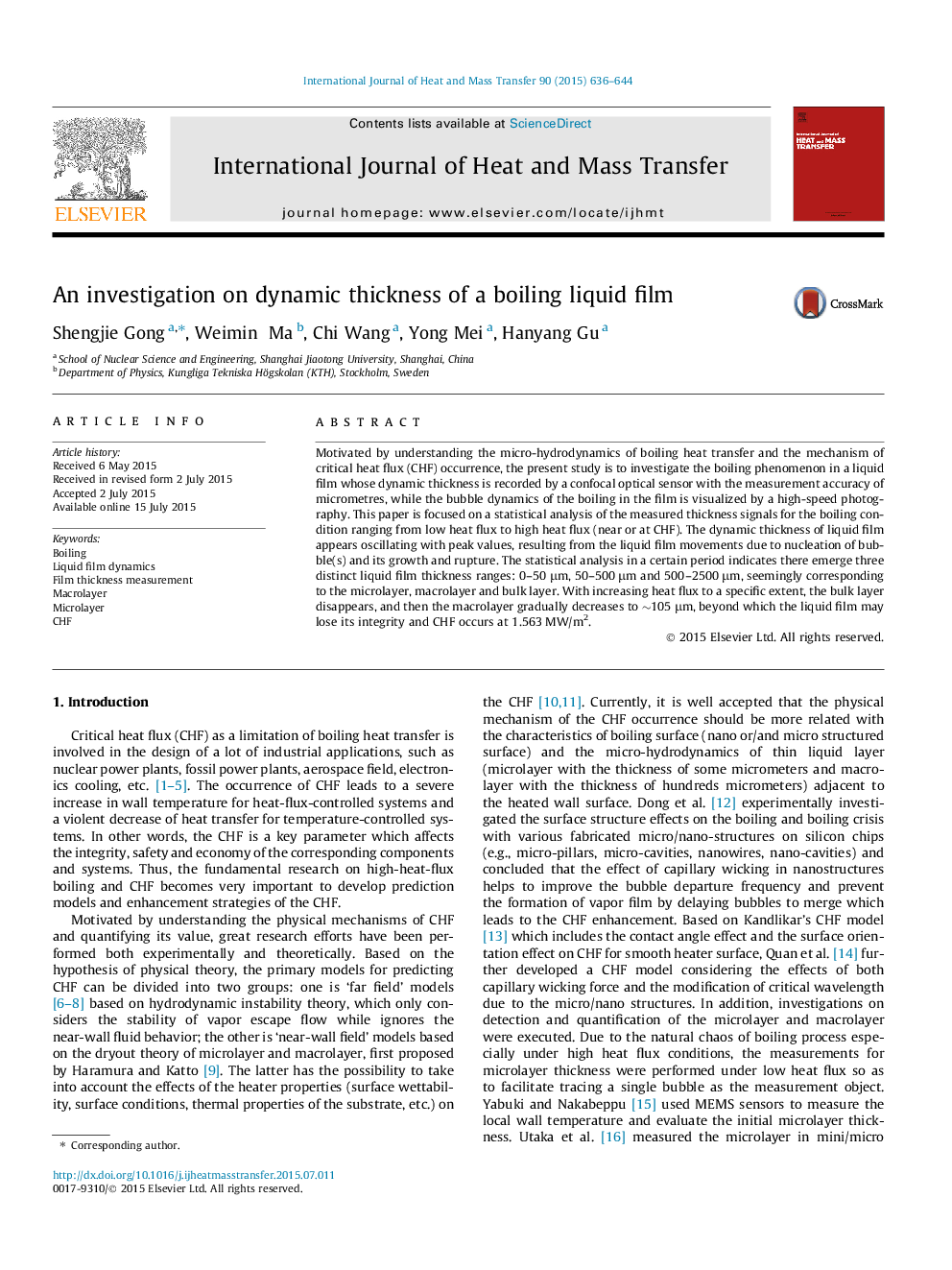| Article ID | Journal | Published Year | Pages | File Type |
|---|---|---|---|---|
| 7056517 | International Journal of Heat and Mass Transfer | 2015 | 9 Pages |
Abstract
Motivated by understanding the micro-hydrodynamics of boiling heat transfer and the mechanism of critical heat flux (CHF) occurrence, the present study is to investigate the boiling phenomenon in a liquid film whose dynamic thickness is recorded by a confocal optical sensor with the measurement accuracy of micrometres, while the bubble dynamics of the boiling in the film is visualized by a high-speed photography. This paper is focused on a statistical analysis of the measured thickness signals for the boiling condition ranging from low heat flux to high heat flux (near or at CHF). The dynamic thickness of liquid film appears oscillating with peak values, resulting from the liquid film movements due to nucleation of bubble(s) and its growth and rupture. The statistical analysis in a certain period indicates there emerge three distinct liquid film thickness ranges: 0-50 μm, 50-500 μm and 500-2500 μm, seemingly corresponding to the microlayer, macrolayer and bulk layer. With increasing heat flux to a specific extent, the bulk layer disappears, and then the macrolayer gradually decreases to â¼105 μm, beyond which the liquid film may lose its integrity and CHF occurs at 1.563 MW/m2.
Related Topics
Physical Sciences and Engineering
Chemical Engineering
Fluid Flow and Transfer Processes
Authors
Shengjie Gong, Weimin Ma, Chi Wang, Yong Mei, Hanyang Gu,
